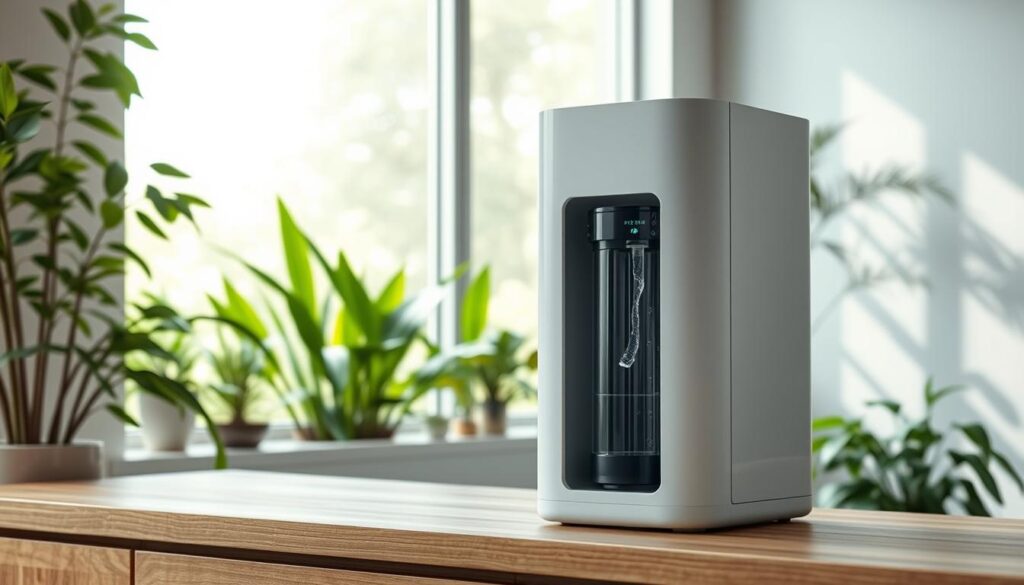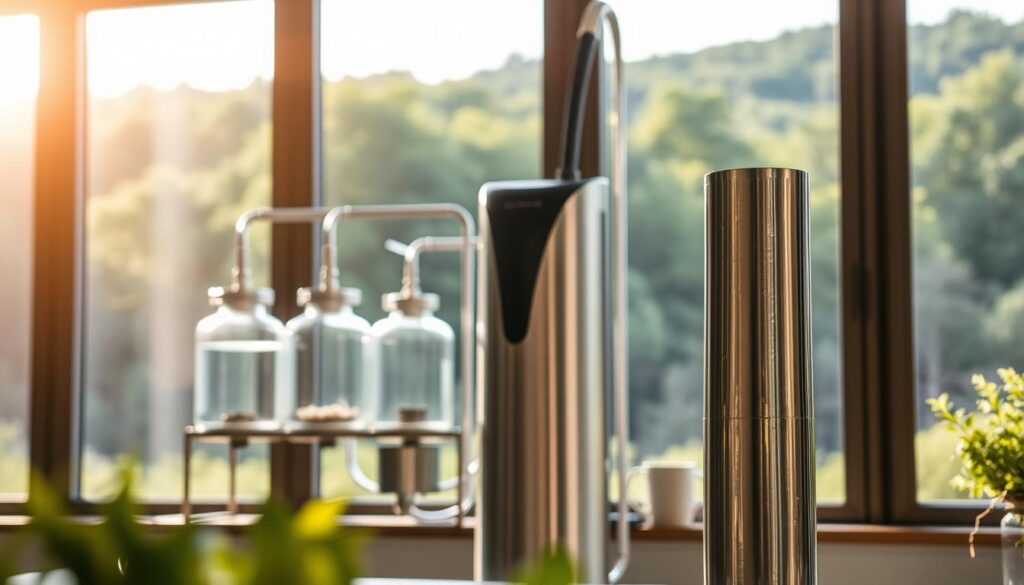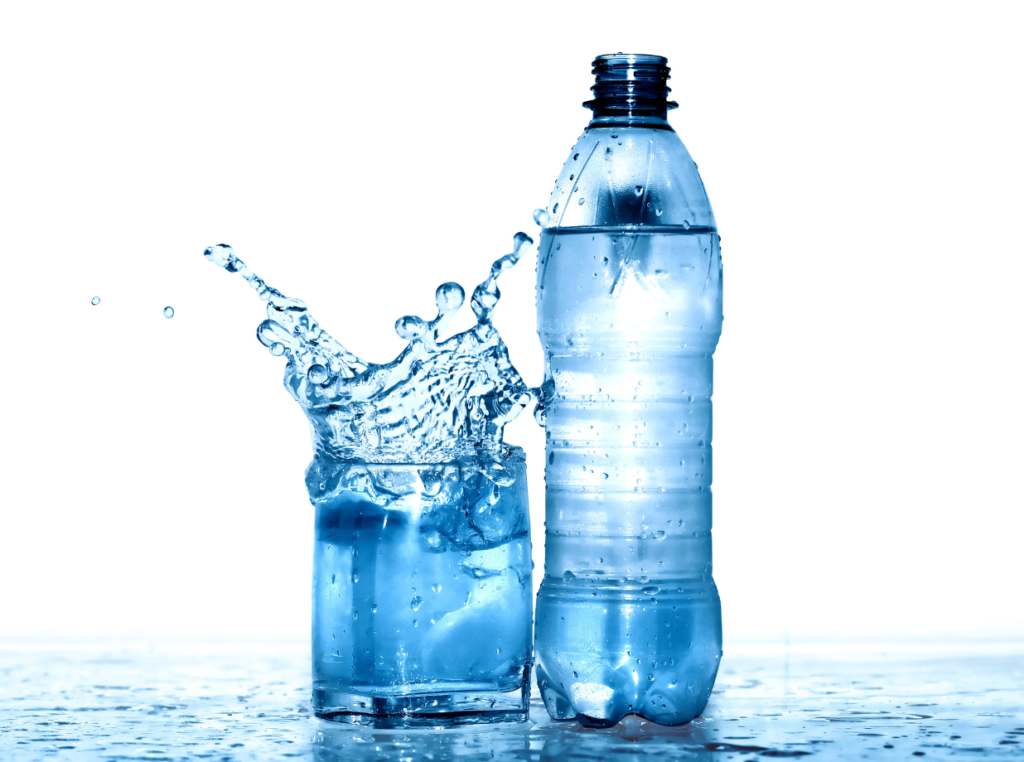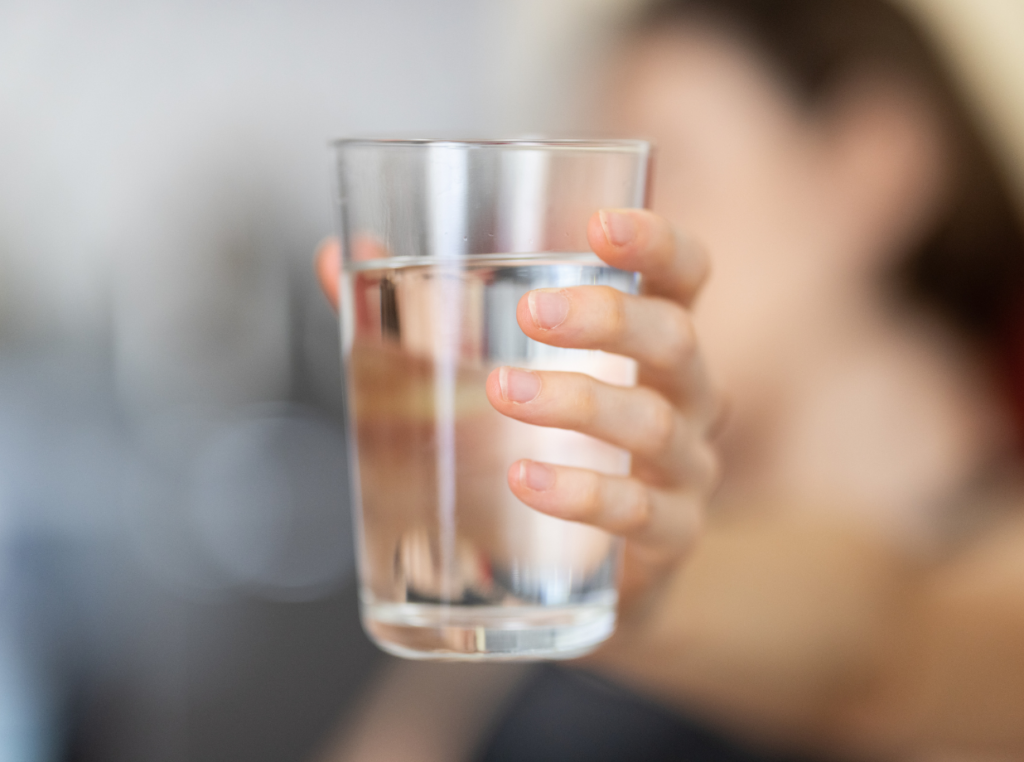As concern for the environment continues to grow, many are questioning the eco-friendliness of various household appliances, including water distillation systems. Our customers have always been ahead of the curve, understanding that an investment in distillation is an investment in health, safety, and long-term savings. But the benefits of distilling water extend far beyond personal health.
Choosing to distill your water with a Pure Water distiller not only ensures clean drinking water but also has wide-reaching benefits for the planet. By adopting eco-friendly distilling technology, individuals can significantly reduce their environmental footprint.
Key Takeaways
- Eco-friendly distilling technology reduces environmental impact.
- Distilling water is a cost-effective and healthy alternative to bottled water.
- Pure Water distillers provide clean drinking water while promoting sustainability.
- Adopting distillation technology contributes to a reduction in plastic waste.
- Investing in a water distiller is a step towards a healthier and more sustainable lifestyle.
Understanding Water Distillation: The Purification Process
By harnessing the power of heat and condensation, water distillers can remove a wide range of contaminants from water, making it a reliable method for purification. Water distillers operate on the principles of evaporation and condensation, where evaporation occurs when water is heated to high temperatures, exciting the water molecules and prompting them to break free into a vapor state.
How Water Distillers Work
The sustainable distillation process involves heating water to produce steam, which is then cooled and condensed back into liquid form, free from many contaminants. This process effectively removes impurities, resulting in clean drinking water.
Types of Water Distillers Available
There are various types of water distillers available, including countertop models, under-sink units, and whole-house systems. Each type caters to different needs and preferences, offering flexibility in implementing eco-conscious water distillation in various settings.
Contaminants Removed Through Distillation
Distillation is effective in removing a broad spectrum of contaminants, including heavy metals, bacteria, viruses, and other impurities. This comprehensive purification process ensures that the water is not only clean but also safe for consumption.
The Environmental Impact of Water Distillation
The environmental footprint of water distillers is a multifaceted issue that encompasses energy consumption, water waste, and mineral disposal. As we delve into the specifics, it becomes clear that the eco-friendliness of water distillers depends on various factors.
Energy Consumption Considerations
One of the primary environmental concerns associated with water distillers is their energy consumption. The distillation process involves heating water to produce steam, which is then condensed back into liquid form. This process requires a significant amount of energy, typically in the form of electricity.
Energy Consumption Data:
| Distiller Type | Energy Consumption (kWh) | Average Cost per Hour |
|---|---|---|
| Basic Model | 1.2 | $0.15 |
| Mid-Range Model | 1.5 | $0.18 |
| High-End Model | 2.0 | $0.24 |
Water Waste During Distillation
Another environmental consideration is the water waste generated during the distillation process. Some water distillers discard a portion of the input water as waste to remove contaminants. The amount of waste can vary depending on the distiller model and its efficiency.
“Water distillers can be an effective method for purifying water, but their environmental impact should be carefully considered.”
Mineral Concentration and Disposal
The distillation process not only removes contaminants but also concentrates minerals and other substances. The disposal of these concentrated byproducts is an environmental concern that needs to be addressed.
Environmentally friendly water distillers often come with features that minimize waste and reduce energy consumption. When selecting a water distiller, opting for models with eco-friendly designs can mitigate some of the environmental impacts.
By understanding the environmental implications of water distillation, consumers can make informed decisions about their water purification choices. Green water distiller options are available that offer a more sustainable solution.
Are Water Distillers Eco-Friendly? Analyzing the Facts
Water distillers are often considered for their ability to purify water, but their eco-friendliness is a complex issue that warrants closer examination. As consumers increasingly seek sustainable home water purification solutions, understanding the environmental impact of water distillers becomes crucial.
Carbon Footprint Assessment
The carbon footprint of water distillers is primarily determined by their energy consumption. Most distillers use electricity to heat water, creating steam that is then condensed back into liquid form. Energy-efficient models can significantly reduce this footprint. For instance, some modern distillers come equipped with features like automatic shut-off or energy-saving modes.
Resource Efficiency Analysis
Water distillers can be resource-efficient in several ways. By using a distiller, households can reduce their reliance on bottled water, thereby cutting down on plastic waste. Additionally, some distillers are designed to be highly efficient in terms of water usage, minimizing waste during the distillation process.
Lifecycle Environmental Impact
Assessing the lifecycle environmental impact of water distillers involves considering their manufacture, use, and disposal. Manufacturers are increasingly adopting eco-friendly manufacturing practices, such as using recyclable materials and minimizing waste. At the end of their life, many distiller components can be recycled, further reducing their environmental footprint.
Using a water distiller can significantly reduce plastic waste by decreasing the need for bottled water. This shift not only lessens the environmental impact associated with plastic bottle production but also reduces the carbon emissions from transporting bottled water.
Energy Efficiency of Modern Water Distillers
Energy efficiency is a key consideration in the design of contemporary water distillers. As consumers become more eco-conscious, manufacturers have responded by developing distillers that minimize energy consumption without compromising on performance.
Technological Advancements in Distillation
Recent technological advancements have significantly improved the energy efficiency of water distillers. These innovations include more effective heating elements and improved distillation processes that reduce the energy required to purify water.
Energy-Saving Features in Contemporary Models
Modern water distillers often come equipped with various energy-saving features. Two notable examples include:
Smart Controls and Timers
Many contemporary distillers are equipped with smart controls and timers that allow users to schedule distillation cycles during off-peak hours or when energy rates are lower. This feature not only saves energy but also reduces operating costs.
Insulation Improvements
Improved insulation in modern distillers helps to retain heat, reducing the amount of energy needed to maintain the distillation process. This enhancement contributes to overall energy efficiency and reduces the environmental footprint of the distiller.
| Feature | Description | Energy Saving |
|---|---|---|
| Smart Controls | Allows scheduling of distillation cycles | Up to 20% |
| Improved Insulation | Reduces heat loss during distillation | Up to 15% |
| Advanced Heating Elements | Efficiently heats water for distillation | Up to 25% |
Our distillers are designed with energy efficiency in mind, incorporating features like automatic shut-off when the distillation process is complete. This not only saves energy but also prolongs the lifespan of the device.
Water Distillers vs. Other Purification Methods: Environmental Comparison
The quest for clean drinking water has led to the development of various purification methods, each with its own environmental footprint. As we strive to make eco-friendly choices, it’s essential to compare the environmental impact of different water purification systems.
Distillation vs. Reverse Osmosis
Reverse osmosis (RO) is a popular water purification method, but it has its drawbacks. RO systems can waste a significant amount of water, although some modern systems claim to be “zero waste” by reusing the wastewater. However, this can lead to faster membrane degradation. In contrast, water distillers produce clean drinking water without wasting as much water.
One of the key differences between distillation and RO is the energy consumption. While RO systems typically require less energy, distillation can be more effective in removing a broader range of contaminants, including heavy metals and bacteria.
Distillation vs. Carbon Filtration
Carbon filtration is another common method of water purification. While it’s effective in removing chlorine and improving taste, it may not remove all contaminants, such as heavy metals and nitrates. Water distillers, on the other hand, can remove a wider range of impurities, making them a more comprehensive solution.
Distillation vs. Bottled Water
Bottled water is a convenient option, but it comes with a significant environmental cost. The production, transportation, and disposal of plastic bottles contribute to greenhouse gas emissions and plastic waste. In contrast, using a water distiller at home can significantly reduce plastic waste and provide a sustainable alternative to bottled water.
Distillation vs. UV Purification
UV purification is a chemical-free method that uses ultraviolet light to kill bacteria and viruses. While it’s effective against microorganisms, it doesn’t remove other contaminants like heavy metals or nitrates. Water distillers, however, can remove a broader range of impurities, making them a more comprehensive solution for clean drinking water.
In conclusion, when comparing water distillers to other purification methods, it’s clear that each has its strengths and weaknesses. However, water distillers offer a sustainable distillation process that can provide clean drinking water while minimizing environmental impact.
Reducing Plastic Waste: How Water Distillers Help
With the alarming rate of plastic pollution, adopting home water distillation can significantly cut down on single-use plastics. The issue of plastic waste has become a pressing concern globally, with millions of tons of plastic ending up in oceans and landfills each year.
The Problem with Single-Use Plastic Bottles
Single-use plastic bottles are a major contributor to this problem. Not only do they consume vast amounts of fossil fuels and water in their production, but they also result in significant waste. When you distill your own water at home, you’re not only purifying your drinking water but also reducing your reliance on bottled water.
This switch to home distillation can lead to a substantial decrease in the number of plastic bottles that end up in landfills and oceans. Moreover, by choosing to distill water at home, you’re also saving money that would otherwise be spent on bottled water.
Long-Term Environmental Benefits of Home Distillation
The long-term environmental benefits of using a water distiller at home are multifaceted. By reducing the demand for single-use plastic bottles, we can lower the amount of plastic waste generated. Additionally, home distillation promotes a more sustainable lifestyle by encouraging the reuse of water containers and reducing the carbon footprint associated with transporting bottled water.
Quantifying Plastic Reduction Over Time
Let’s consider the impact of home water distillation on plastic waste reduction. For instance, if a family of four uses a water distiller and consumes 2 liters of distilled water per day, they can avoid using approximately 730 liters (or about 292 plastic bottles, assuming a standard 2.5-liter bottle) per year.
| Family Size | Daily Water Consumption (Liters) | Plastic Bottles Saved Annually |
|---|---|---|
| 4 | 2 | 292 |
| 3 | 1.5 | 219 |
| 2 | 1 | 146 |
By adopting home water distillation, households can make a significant contribution to reducing plastic waste. As shown in the table, even small changes in daily water consumption habits can lead to a substantial reduction in plastic bottle waste over time.

Sustainable Materials in Modern Water Distillers
Sustainable materials are becoming a standard in the production of modern water distillers, reflecting a broader commitment to environmental stewardship. This shift is not only beneficial for the planet but also enhances the overall quality and efficiency of the water distillation process.
Eco-Friendly Manufacturing Practices
Manufacturers are now adopting eco-friendly manufacturing practices that minimize environmental impact. This includes using recycled materials, reducing waste, and implementing energy-efficient production processes. For instance, some companies are using BPA-free plastics and stainless steel components that are durable and recyclable.
Recyclability and End-of-Life Considerations
The recyclability of water distillers is a critical factor in their environmental footprint. Modern distillers are designed with end-of-life considerations in mind, making it easier to recycle or repurpose their components. This approach not only reduces electronic waste but also conserves resources by facilitating the reuse of valuable materials.
| Material | Recyclability | Environmental Impact |
|---|---|---|
| Stainless Steel | High | Low |
| BPA-Free Plastic | Moderate | Moderate |
| Copper | High | Low |
Certifications and Standards for Green Appliances
To ensure that water distillers meet certain environmental standards, various certifications and standards have been established. These include Energy Star ratings and compliance with EPA guidelines. Such certifications help consumers make informed choices about the eco-friendliness of their water distillers.
By choosing water distillers made with sustainable materials and manufactured using eco-friendly practices, consumers can significantly reduce their environmental impact. As the industry continues to evolve, we can expect to see even more innovative approaches to sustainability in water distillation.
Maximizing the Eco-Friendliness of Your Water Distiller
Maximizing the eco-friendliness of your water distiller requires a combination of optimal usage and maintenance. By adopting sustainable water purification solutions, you can significantly reduce the environmental impact of your water distillation process.
Optimal Usage Practices
To use your water distiller efficiently, it’s crucial to follow the manufacturer’s guidelines and understand the distillation process. Regular cleaning is also vital as it prevents the growth of organisms such as bacteria and mold. Apart from routine cleaning practices, it’s important to rinse the boiling chamber between distillation cycles to maintain hygiene and efficiency.
Maintenance for Longevity and Efficiency
Regular maintenance not only prolongs the life of your water distiller but also ensures it operates at peak efficiency. This includes replacing filters as recommended and checking for any signs of wear or damage. By maintaining your distiller, you’re supporting eco-friendly distilling technology that minimizes waste and reduces energy consumption.
Repurposing Distillation Byproducts
Distillation produces two main byproducts: distilled water and mineral residue. Both can be repurposed in various ways.
Household Uses for Distilled Water
Distilled water is perfect for use in humidifiers, irons, and car batteries, reducing the risk of mineral buildup and prolonging the life of these appliances.
Creative Applications for Mineral Residue
The mineral residue can be used as a natural fertilizer for plants or in crafting projects. This creative reuse reduces waste and adds value to the distillation process, aligning with sustainable water purification solutions.

By implementing these practices, you not only enhance the eco-friendliness of your water distiller but also contribute to a more sustainable lifestyle. Regular maintenance, optimal usage, and creative repurposing of byproducts are key to achieving this goal.
The Future of Eco-Friendly Water Distillation
As we look to the future, eco-friendly water distillation is becoming increasingly important for sustainable living. Access to clean and safe water is essential for good health and well-being, and more often than not, our water sources contain harmful contaminants that lower the quality of water.
Emerging Sustainable Technologies
The water distillation industry is witnessing a surge in sustainable technologies that promise to reduce environmental impact. These innovations include more energy-efficient distillation processes and the use of eco-friendly materials in distiller construction.
Solar-Powered Distillation Systems
One of the most promising developments in eco-friendly water distillation is the integration of solar power. Solar-powered distillation systems offer a renewable energy source, significantly reducing the carbon footprint of water purification.
Integration with Smart Home Ecosystems
The future of water distillation also involves integration with smart home ecosystems. This allows for more efficient management of water purification, including monitoring water quality and distiller performance in real-time.
Conclusion: Making an Eco-Conscious Water Purification Choice
In an age where water quality can no longer be taken for granted, a water distiller presents a straightforward, effective solution for eco-friendly home water purification. By understanding the purification process, environmental impact, and comparisons with other methods, individuals can make informed decisions that prioritize health, taste, and environmental responsibility.
With the advancements in technology and the availability of energy-efficient models, water distillers have become a viable option for those seeking a sustainable solution. By choosing a water distiller, individuals can reduce their reliance on single-use plastic bottles and minimize their carbon footprint.
As the world moves towards more sustainable practices, the importance of eco-friendly home water purification cannot be overstated. By opting for a water distiller, individuals can contribute to a healthier environment while ensuring access to clean drinking water.



